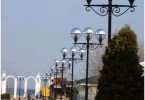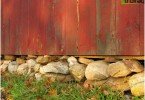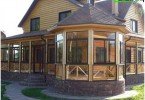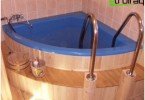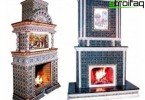A fireplace is a place of family gatherings, a warm and cozy corner, conducive to a quiet conversation and stories about pressing affairs. This oasis of pacification and comfort beckons all home to itself. But before settling in front of the fireplace in a comfortable easy chair, you will have to work hard to create the atmosphere of well-being and harmony that carries this indispensable attribute of any country house. One of the stages of the construction of a family hearth is the facing of fireplaces. The style of the room and the longevity of this element of the interior largely depend on how and with what the facade of the fireplace will be decorated..
Content
- The advantages of finishing with natural stone
- The choice of facing stone
- Fireplace technology with natural stone
The advantages of finishing with natural stone
Stone fireplace decoration is one of the most popular cladding methods and there are several reasons for this..
- Such fireplaces are very beautiful, because no material can be compared with natural stone and its unsurpassed appeal and aesthetics..
- When heated, natural stone slabs do not emit any smoke and toxic substances, leaving the air in the room clean and fresh.
- Natural monolith is able to withstand virtually any physical activity (shock, mechanical damage, etc.).
- Such a facing material has high heat resistance.
- Natural stone can be processed in various ways, giving it the shape that you like, which means you can create your own image and style in the house, emphasizing once again your impressiveness and personality.
The choice of facing stone
In principle, the decoration of fireplaces can be carried out by almost any natural stone, because this material, in any case, has all the properties that have just been listed. The main advantage of natural stone is its design capabilities. But with regards to durability, then the approximate service life of fireplaces of various kinds of stones can vary significantly. So, for example, a fireplace made of limestone or colored marble will begin to “age” after 30-70 years, and the final destruction can occur after 100 and 600 years. This figure may vary depending on the conditions in which the product is located and how it was properly looked after..
Most often, granite and marble are used for cladding the facade of the fireplace. Granite is a strong and quite durable rock, it is well processed and polished, but its cost is quite high, since the process of mining this stone is laborious and time-consuming..
Marble is popular no less than granite, because its unique pattern is very beautiful and interesting. No wonder that in ancient times it was from marble that various statues, columns and even whole houses were made.
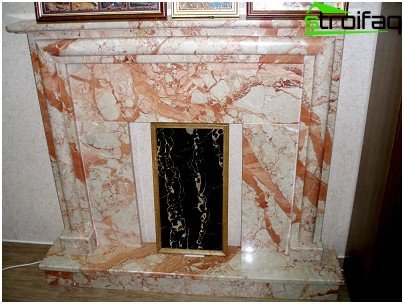
Marble cladding combines the charm of a natural pattern with maximum durability
But in addition to marble and granite, various sandstones, limestones, tuff and other materials can be used for cladding fireplace groups.
I would like to highlight a separate line of kiln (talc chloride). This mineral has a very high heat capacity (almost 2.5 times higher than that of ordinary ceramic bricks). It warms up much faster and keeps heat longer.
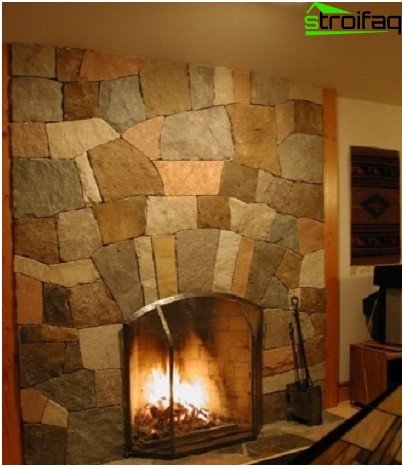
The fireplace faced with sandstone looks peculiar – this material is much cheaper than granite and marble
If you do not have the financial ability to purchase natural stone, then facing the fireplace with artificial stone is a great alternative to natural materials. This type of decoration will not only save money, but will create a beautiful fireplace, which in its aesthetic appeal will be no worse than a fireplace lined with natural monolith.
Fireplace technology with natural stone
Decorating a fireplace with decorative stone is a laborious process, and its features are primarily due to the physical properties of the material and some of the nuances of its production technology.
Surface preparation
- first you need to carefully clean the surface of the brickwork from dust and various impurities;
- we deepen the masonry seams to a depth of at least 1 cm;
- we fit the surface of the fireplace with a reinforcing mesh with cells of 5×5 cm.
- proceed with the fitting of the facing material
On the floor we draw with a chalk a figure that exactly matches one of the vertical walls of the fireplace (the shape and size must be absolutely identical) and begin to lay out all the cladding elements, fitting them to each other in color and thickness.
Important: if the differences in the thickness of the tiles are significant, and they themselves have an uneven structure, then it is not necessary to strive to ensure that they fit perfectly together – all the same, their surface is curved and in the total mass the fireplace will look harmonious.
If the surface of the material you have chosen is smooth, then tiles that differ in thickness from the rest should be discarded, otherwise you will have to change the thickness of the adhesive layer in the places where such a plate will be laid.
Important: fasten the thickest tiles first, using the minimum amount of glue for this. This kind of landmark will help you in your future work..
Nuances
Lining the fireplace with your own hands is a fairly simple process and anyone can cope with it. However, this work still has its own nuances..
Small pieces left after trimming are placed in inconspicuous places, for example, near the inner corners or at the very bottom of the fireplace.
If the natural stone you use for cladding is irregular in shape, then you must mark it before laying. After fitting all the elements to each other, in the center of each tile, its number is written in chalk, and the numbers of adjacent tiles are signed along its faces. So you won’t get confused which tile should be in this or that place.
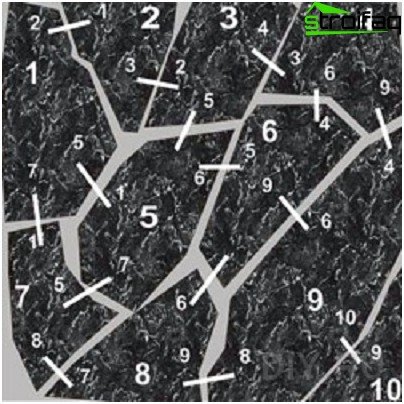
Fitting and marking natural stone tiles
Natural stone laying
Start the installation process from the bottom corners from the bottom up. Then we lay out the upper horizontal row, and after that – all other rows from left to right, from top to bottom.
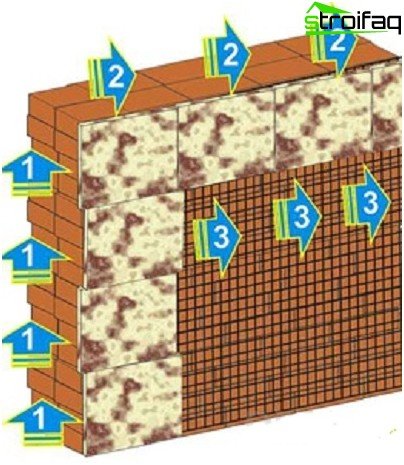
Tile gluing sequence
If the surface of your fireplace has a height of more than 50 cm, and the tile that you have chosen as the facing is quite thick (up to 10 mm), then it is advisable to use wire S-mounts, which will give additional strength and reliability of the whole structure. This hook is fixed on the reinforcing mesh, and tile is installed on its lower edge. Such fasteners need to be used approximately every half meter of height, but in general, the thicker the facing tile, the more often.
You need to start grouting not earlier. than two days after finishing work. First you need to check in an inconspicuous place or on a piece of tile, whether the grout leaves traces, so as not to spoil the appearance of your fireplace.
Decoration of fireplaces with artificial stone is similar to the process just described for laying tiles made of natural stone.
Tile fireplace decoration – a classic of the genre Which tile to tile
In recent years, decorating a fireplace with tiles has become no less popular than facing with natural stone, because tiles are not only beautiful and stylish, but also modern.
Terracotta, majolica, porcelain stoneware and clinker are used as facing material. All these types of finishing materials, although they have similar features, are still quite significantly different from each other..
Majolica – it is a pressed ceramic tile with a pattern, coated with glaze. Due to this, it has a bright shine and gloss, which perfectly complements the premises, made in the classical style..
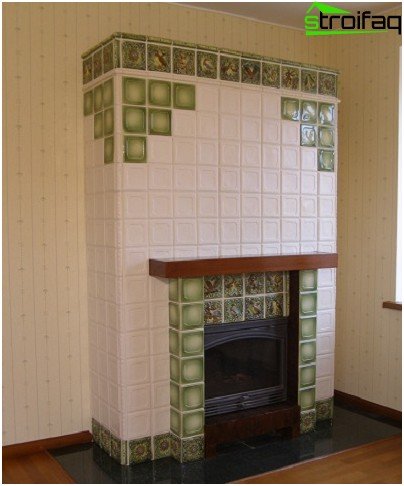
Majolica and terracotta fireplace
Terracotta – glazed ceramic tiles.
Porcelain Tiles – the finishing material is similar in its properties to natural stone. This “similarity” is associated not only with external data, but also with the characteristics of the material.
Clinker – thick clay ceramic tiles with various additives.
Since the main component of the ceramic tile is clay, it does not affect the efficiency of the fireplace, although it slightly increases the heating time of the heating device.
Laying preparation
The surface of the fireplace, of course, must be carefully prepared and cleaned of all kinds of contaminants. Then we fasten the grid. It is best to fix it to the wire tabs left in the seams of the brickwork. But if they are not, then you can use ordinary nails up to 10 cm long with metal washers on them. these nails are driven straight into the seams.
The surface prepared and covered with reinforcing mesh is leveled using an adhesive solution designed for bonding ceramic tiles. Apply glue with a spatula. When the surface is completely dry, you can proceed directly to laying the tiles.
Laying ceramic tiles
Before starting work, it is advisable to make markings using ordinary rope with a small weight, which can be fixed on a nail. It is along this line that we will conduct the styling process.
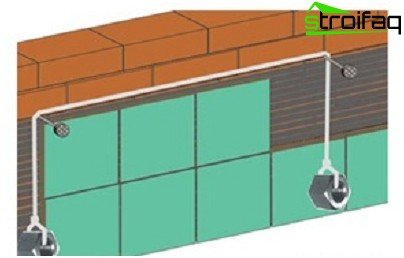
Proper plumb placement during tile installation
You need to start from the bottom row. We apply glue with a notched trowel directly to the wall so that we will lay one or two tiles on it. Press them firmly with your hands, if necessary, you can lightly tap them with a rubber mallet. Trim and leftovers last.
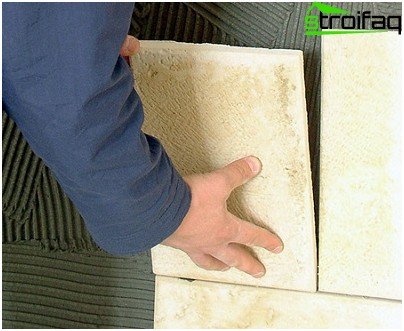
The process of mounting tiles on the surface of the fireplace
Special plastic crosses, stuck in two pieces on each side, will ensure the constancy of the gaps. Pay special attention to the correspondence of the position of all the tiles to the marking lines, as well as to the fact that they all lie in the same plane, which can be checked with an ordinary rail. If deficiencies are found, it is necessary to eliminate them immediately, since it will be impossible to correct errors after the adhesive has hardened..
The remnants of the adhesive solution must be removed immediately after installation, and after about a day you can start grouting the joints. For these purposes, mineral compositions of various colors are used. Apply them with a spatula or grater. After carefully filling all the seams with a puff, they are leveled with a damp sponge, gently running without much pressure on the seam.
After 15-20 minutes, the surface of the tiles can be cleaned of the remains of the fugue with a clean cloth, but at least a day must pass for the final drying.
Tile for facing fireplaces is a universal finishing material, which is ideal not only for heating devices, but also for interior decoration.
And so that you can see the possibilities of ceramic tiles, natural and artificial stone, as well as how the decoration of the fireplaces transforms the photos below, we recommend that you look before you even decide to repair.
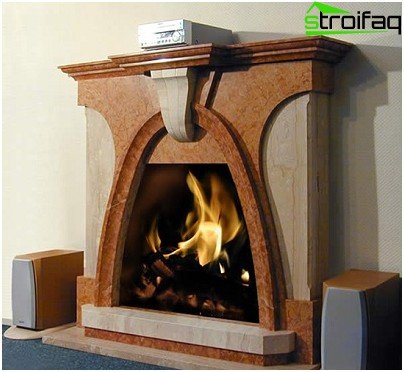
The solid decorative fireplace trim with marble slabs recalls the royal chambers
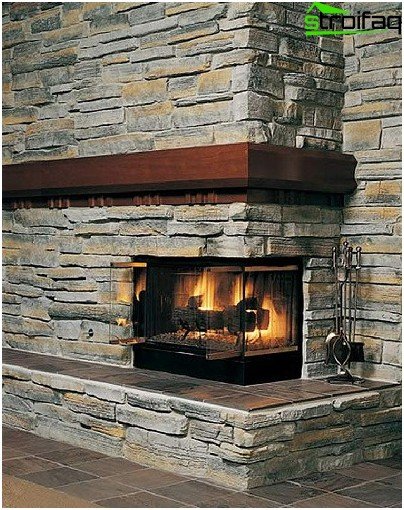
Artificial stone tile fireplace
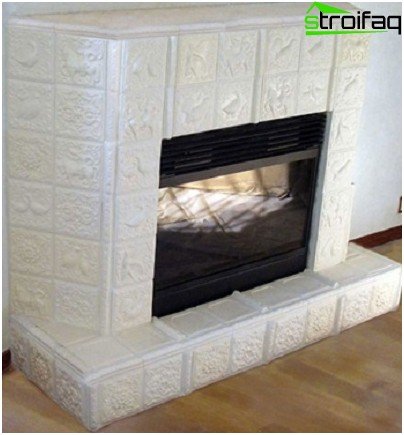
Option of facing the fireplace with ceramic tiles
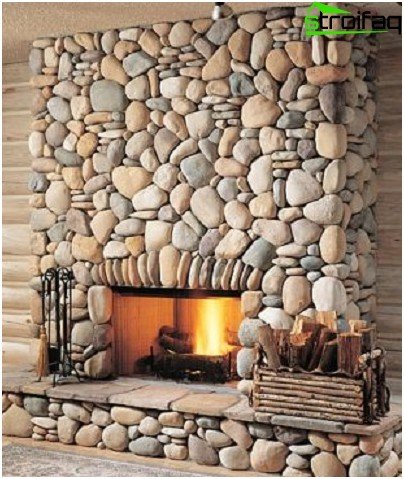
Fireplace natural stone: as if in a medieval knight’s castle
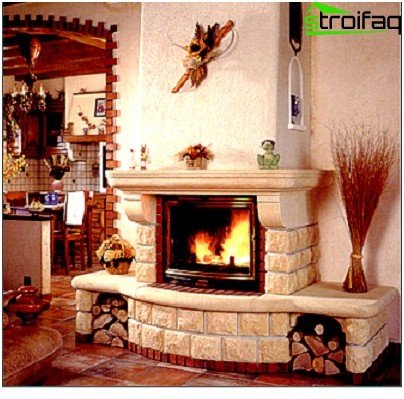
Artificial stone finish allows you to harmoniously fit the fireplace into the hi-tech interior
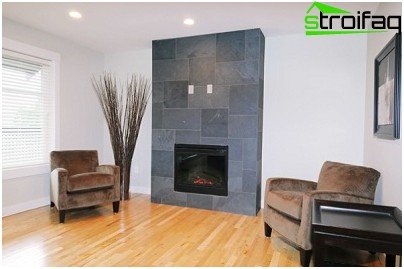
Fireplace trim with ceramic stylized as natural stone
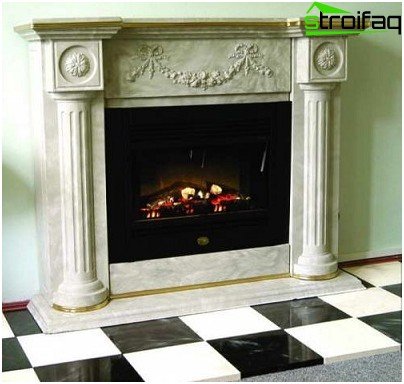
A classic marble mantelpiece transforms the room into an antique palace
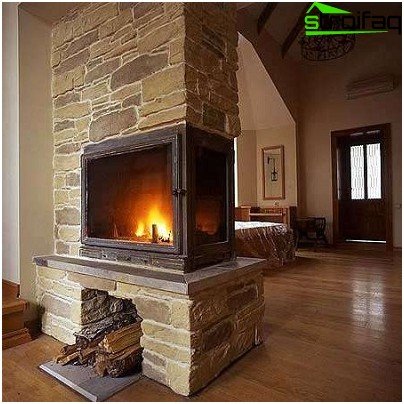
Natural stone for a long time retains the heat received during the burning of a fireplace, for a long time “gives” to its users
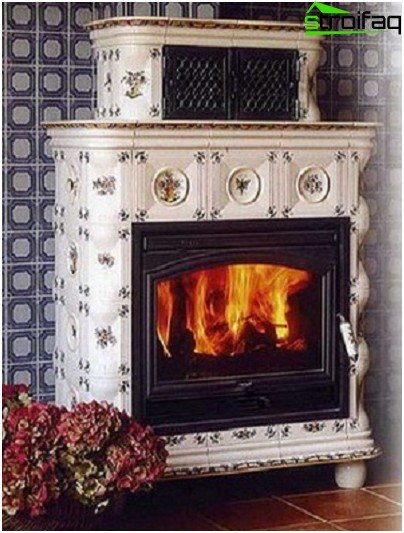
Tiled fireplace – cozy ethnic style.


